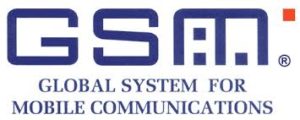 Mobile phones have become omnipresent and this widespread adoption of mobile phones has a lot to do with GSM mobile service. It is GSM mobile service that expanded reach of mobile phones among everyone across the world.
Mobile phones have become omnipresent and this widespread adoption of mobile phones has a lot to do with GSM mobile service. It is GSM mobile service that expanded reach of mobile phones among everyone across the world.
In Nepal only, according to the latest MIS report released by Nepal Telecommunication Authority, 26,896,387 have subscribed to GSM mobile service. 29.95 million has access to telephone service and of it, 26,89 million are GSM mobile subscribers. Currently, GSM mobile service is operated by Ncell, Nepal Telecom and Smart Telecom.
Nepal Telecom launched GSM mobile service in 1999. The first private sector GSM mobile operator launched GSM mobile service in 2005. Ncell leads GSM mobile market with 13.43 million subscribers followed by 12.09 million subscribers of Nepal Telecom. Smart Telecom has 1.3 million subscribers in its GSM mobile segment.
To put it simply, GSM is mobile service that enable users to roam between different networks, and communicate everywhere with GSM coverage. GSM stands for Global System for Mobile Communication. It is the second generation of mobile communication. Mobile services based on GSM technology were first launched in Finland in 1991. GSM revolution brought the mobile phone in reach of nearly everyone across the world.
GSM is most preferred network for its low cost base transceiver station, international roaming, high-quality speech and its compatibility with Integrated Services Digital Network (ISDN) and other telephone company services.
The unique features GSM brought in was Short Message Service(SMS), call forwarding, call waiting, call barring. The other attractive feature is its network is secure, both speech and data are converted into code to prevent eavesdropping, GSM subscribers are identified with their SIM card.
GSM uses a variation of time division multiple access (TDMA) , which improves spectrum capacity by splitting each frequency into time slots. Callers’ voice is transformed into digital data which is given channel and time slot.
 The GSM network is divided into three system: the switching system(SS), the base Station System(BSS), and the Operation and Support system (OSS).
The GSM network is divided into three system: the switching system(SS), the base Station System(BSS), and the Operation and Support system (OSS).
Switching system (SS) is responsible for switching of calls between the mobile and other fixed or mobile network users. All radio-related functions are performed in the BSS, which consists of base station controllers(BSCs) and the base transceiver stations(BTSs).
The network operator monitors and controls the system through Operation and Support System (OSS). An important function of OSS is to provide a network overview and support the maintenance activities of different operation.
It was first developed in the 1980s through a pan-European initiative, involving the Eureopean Commission, telecommunications operators and equipment manufacturers.
Summary of GSM Milestones :
- 1982 GSM Formed
- 1986 Field Test
- 1987 TDMA chosen to be the Access Method
- 1988 Memorandum of understanding signed.
- 1989 validation of GSM system
- 1990 pre operation system
- 1991 pre operation setup
- 1922 commercialization system startup.
 Doorsanchar Nepalese Telecom News, Smart Phones, Tablets, Mobiles, Gadgets, ICT & Telecom issues, Nepal Telecom, Ncell, Teleosonera, STM Telecom Sanchar, Nepal Satellite Telecom, Hello Mobile, Internet in Nepal, Business on Telecom Sector in Nepal, Views, Blogs, ICT News, Views, Reviews from Nepal, Mobile Prices in Nepal, Buy a Mobile in Nepal, Comparative mobile prices, Smart Phone in Nepal, Buy a smart phone in Nepal, Nepal Cheapest Mobiles, Nepal Doorsanchar Company Limited, Nepal Telecom News, smart, NTC, Namaste, GPRS, ADSL, internet, DSL, IP, Gramin Telecom, Rural Telecom, iPhone, Apple in Nepal, Sewa Telecom, Reynolds Holdings, SMS, MMS, Free Phone, CDMA, internet in Nepal, Nepal Phone, Free Phone Nepal, Website hack, WWW, http://, Telecom Issues, Telecom Magazines, Huwai, ZTE, Samsung, Motorolla, Panasonic, Smart TV, configure ADSL, Subscribe internet, Cable, DSL, Internet Speed Test, Test My Net Speed, Online Cinema, Free Calling Card, Nepal Tech, Tech Nepal, Tech 2 Nepal, Travelling Nepal, News Nepal, Nepal News, ekantipur, onlinekhabar, nagariknews, mysansar, Camera, Tablet, LTE, Ultrabook, E Cards, FTP, Google, Cloud, Cloud computing, cloud service, Mac, Free software, software freedom, downloads, download free software, Nepal software, play, google play, android apps, applications, IOS, Apple, Facebook, google.com, facebook.com, social networking, domain, free domain, Nepal Website, Website making, website design, free calling cards, chat, Nepal Chat, Nepalese websites, Traveller sites in Nepal, Wallpapers, Nepalese wallpapers, New Walpapers, The Pirates bay, download software, Free website making, eticketing, eservice, egovernance in Nepal, egov, Nepal electronics good, Mobile Expo in Nepal, Mobile Market, Nepal Mobile Price, Nepal Tech News, Nepal Telecom News, Nepal Doorsanchar News, All telecom News, Tech News, Living with ICT and Telecom, Lifestyle, Ebooks, ereadings, elibrary, free books online, free software online, online media
Doorsanchar Nepalese Telecom News, Smart Phones, Tablets, Mobiles, Gadgets, ICT & Telecom issues, Nepal Telecom, Ncell, Teleosonera, STM Telecom Sanchar, Nepal Satellite Telecom, Hello Mobile, Internet in Nepal, Business on Telecom Sector in Nepal, Views, Blogs, ICT News, Views, Reviews from Nepal, Mobile Prices in Nepal, Buy a Mobile in Nepal, Comparative mobile prices, Smart Phone in Nepal, Buy a smart phone in Nepal, Nepal Cheapest Mobiles, Nepal Doorsanchar Company Limited, Nepal Telecom News, smart, NTC, Namaste, GPRS, ADSL, internet, DSL, IP, Gramin Telecom, Rural Telecom, iPhone, Apple in Nepal, Sewa Telecom, Reynolds Holdings, SMS, MMS, Free Phone, CDMA, internet in Nepal, Nepal Phone, Free Phone Nepal, Website hack, WWW, http://, Telecom Issues, Telecom Magazines, Huwai, ZTE, Samsung, Motorolla, Panasonic, Smart TV, configure ADSL, Subscribe internet, Cable, DSL, Internet Speed Test, Test My Net Speed, Online Cinema, Free Calling Card, Nepal Tech, Tech Nepal, Tech 2 Nepal, Travelling Nepal, News Nepal, Nepal News, ekantipur, onlinekhabar, nagariknews, mysansar, Camera, Tablet, LTE, Ultrabook, E Cards, FTP, Google, Cloud, Cloud computing, cloud service, Mac, Free software, software freedom, downloads, download free software, Nepal software, play, google play, android apps, applications, IOS, Apple, Facebook, google.com, facebook.com, social networking, domain, free domain, Nepal Website, Website making, website design, free calling cards, chat, Nepal Chat, Nepalese websites, Traveller sites in Nepal, Wallpapers, Nepalese wallpapers, New Walpapers, The Pirates bay, download software, Free website making, eticketing, eservice, egovernance in Nepal, egov, Nepal electronics good, Mobile Expo in Nepal, Mobile Market, Nepal Mobile Price, Nepal Tech News, Nepal Telecom News, Nepal Doorsanchar News, All telecom News, Tech News, Living with ICT and Telecom, Lifestyle, Ebooks, ereadings, elibrary, free books online, free software online, online media
















